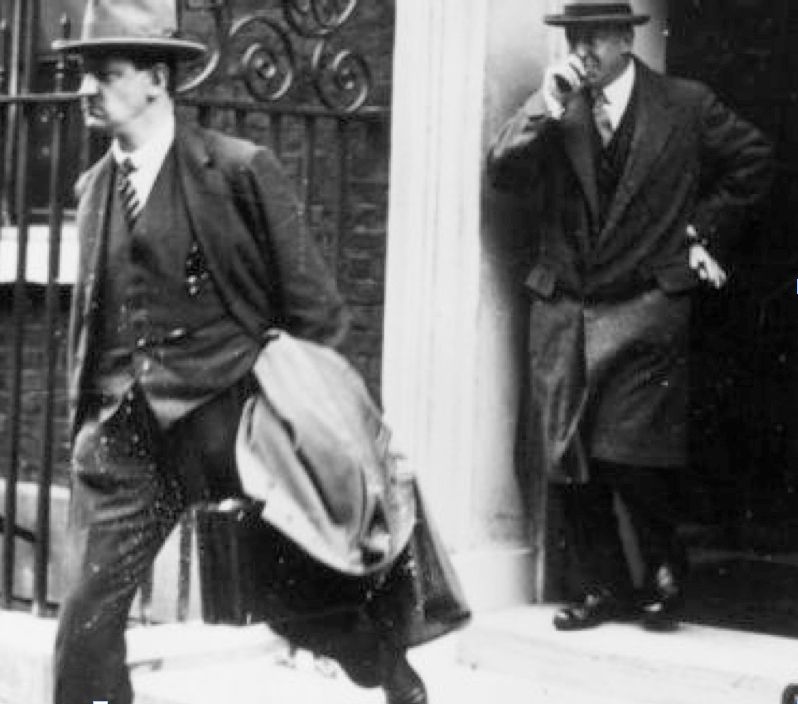IN the early hours of December 6, 1921, the Irish delegates taking part in the negotiations with the British government signed The Anglo Irish Treaty. Their decision reinforced the terms of the partitionist Government of Ireland Act passed in the British Parliament one year earlier.
In the years since then the decision to sign the Treaty has been discussed, debated, argued over and been the subject of countless books and articles. For some it was a necessary decision in the face of the threat of immediate and terrible war by British Prime Minister Lloyd George. For others it was a betrayal of the Republic, of the Proclamation and of those who had fought and died in 1916 and in the following five years.
The reality is that the Irish plenipotentiaries, led by Arthur Griffith and including Erskine Childers, Michael Collins, George Gavin Duffy, Robert Barton, Eamonn Duggan and John Charles, were outmanoeuvred at every turn by a more experienced and ruthless British government. Lloyd George ratcheted up the pressure throughout the negotiations.
He set short deadlines for responses, played on the political and personality differences that existed within the Irish delegation, and then, around 7pm on December 5 he produced two letters he claimed were for the unionist leader James Craig. One was to tell Craig that agreement had been reached. The other would tell him that there was no agreement. That it was to be “war – and war within three days.” Lloyd George challenged the divided Irish delegation to decide which letter would go that night. He claimed a special train and destroyer were on standby, ready to carry one or the other to Belfast.
The subsequent reports of the conversation between the delegates tell of despair and anger, of frustration and of great stress as they argued among themselves about the best course of action to take. They seemed to forget that the decision was not theirs alone. As plenipotentiaries they had the power to negotiate and conclude a treaty but their instructions were to sign nothing unless they contacted the Cabinet in Dublin. They failed to do this. There are a variety of reasons given for this – the threat of war by Lloyd George, the arguments among themselves, the belief that the Boundary Commission would make the northern state unviable. Whatever the reason, the fact remains that they did not have the authority to sign the Treaty.
Their fateful decision and the subsequent vote in the Dáil in January 1922 led to a disastrous Civil War and to the consolidation of the partition arrangement desired by the British and the unionists. For the previous decade the question of Home Rule and of partition had dominated Irish and British politics. Throughout that period the British and the unionists had very clear objectives – for the island of Ireland to remain within the Empire and under the dominance of the British government; for the six north east counties to be a separate unionist controlled state; and for the Monarch to be the head of any Irish state.
Speaking in the debate in the British House of Commons on December 15, 1921, Winston Churchill (Secretary of State for the Colonies) said in his defence of the Treaty that had been signed just nine days earlier in Downing Street: “Sinn Féin Ireland demanded an independent sovereign republic for the whole of Ireland, including Ulster. We insisted upon allegiance to the Crown, membership of the Empire, facilities and securities for the Navy, and a complete option for Ulster. Every one of those conditions is embodied in the Treaty.”
From the December 6 vote and the vote by the Dáil on January 7, 1922, where it was passed by 64 votes to 57, flowed five decades of an apartheid state in the North and the oppression of the nationalist people and decades more of conflict.
The Treaty was a disaster. It’s time to undo that grave mistake. It’s time for the reunification of Ireland. There is now a process to achieve this.
It is through the referendums set out in the Good Friday Agreement. Any discussion about the Treaty must also include this fact and the need for the Irish Government to plan for it. We cannot plan for the past. But we can and must plan for the future.
Getting to know a familiar Dublin landmark

BACK in the day I would often travel by bus from Dundalk to Dublin. Sometimes I was unlucky and my bus was the one which stopped at every telegraph pole on route. A tedious journey. Other times I was lucky with the express yoke and before I knew it we would be pulling into Busáras in the capital.
Either way Busáras was the exit point in Baile Átha Cliath. I was always taken by aspects of the building but in my rush to get to wherever I was going I never delayed to explore it. The journey back and the wait for the bus home allowed for a more relaxed but still superficial scrutiny.
Eoin Ó Broin had the same experience. For eleven years he travelled past or through the bus station while living in Belfast. He was a Sinn Féin Councillor here. Now he is a TD and Sinn Féin’s Housing spokesperson.
Like me, Eoin was too busy to pay too much heed to Busáras. But unlike me he set out to rectify that. He booked into the Open House tour organised by the Architecture Foundation.
I’m glad he did. Eoin is like that. Curious and seldom idle. And a fine cook. That tour changed everything for him about Busáras. Among other things he discovered that it is part of a larger building named after the 1916 leader Seán Mac Diarmada. It is also the head office of the Department of Social Protection.
His new book, The Dignity of Everyday Life, grew from that engagement. It is very well written and has been rightly and critically acclaimed for the descriptiveness of Eoin’s prose and for its historic detail. He tells the story of an egalitarian effort, led by pioneering architect Michael Scott, to create a building uniquely Irish, utilitarian but uplifting. A building with amenities to indulge creative and artistic adventurers with an uplifting ambiance and a public space for Irish citizens and visitors. Not just a depot for buses but a jewel in the heart of Dublin. Worthy to be called after Seán Mac Diarmada. Eoin tells how this vision was lost in the political machinations of that time. He illustrates this history with drawings and photos from Michael Scott’s archive courtesy of the Irish Architecture Archive.
And he draws on the creativity and photographic skills of Mal McCann to take us through Busáras as it is today. I have long admired Mal’s photos. He has an eye for the commonplace, the quirky angle and the beauty of everyday things. His use of light is ingenious.
Eoin and Mal are a great team. They and Merrion Press have done us all a great service by publishing this handsome volume. As old Dublin is vandalised by venture capitalists and developers and their political cronies and as historic sites like Moore Street – last meeting place of the 1916 leaders – are threatened and the home of another 1916 leader The O’Rahilly is destroyed, The Dignity of Everyday Life is a timely reminder of why this should not be allowed.
The Dignity of Everyday Life by Eoin O Broin and Mal McCann is published by Merrion Press.
QUESTIONS & ANSWERS

I FIND myself asking questions I used to hear older people ask. Questions which are rarely answered no matter how often they are asked. Maybe because I often mutter them to myself. Questions like:
• Who left the immersion on?
• Would you close that bloody door?
• Were you born in a field?
• Who is using all the toilet paper?
• Why don't you turn off the light?
• Would you stop running the hot water?





